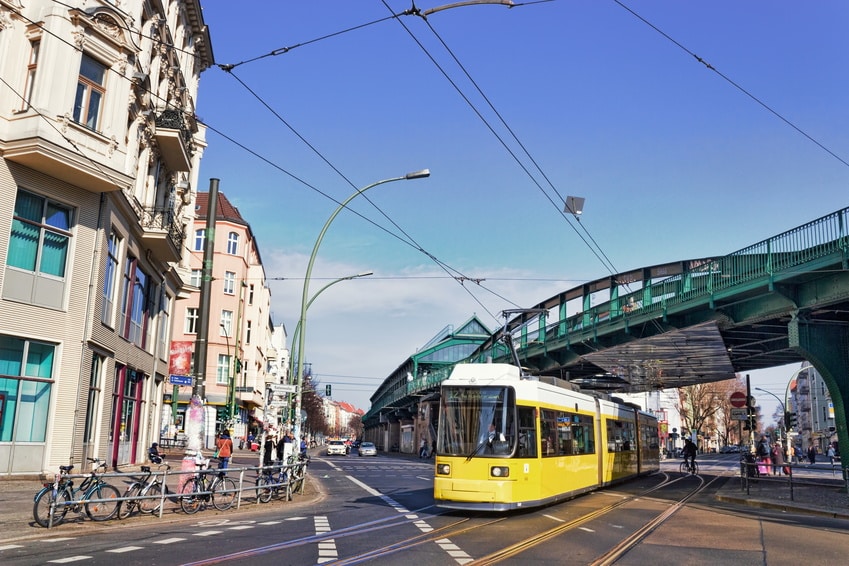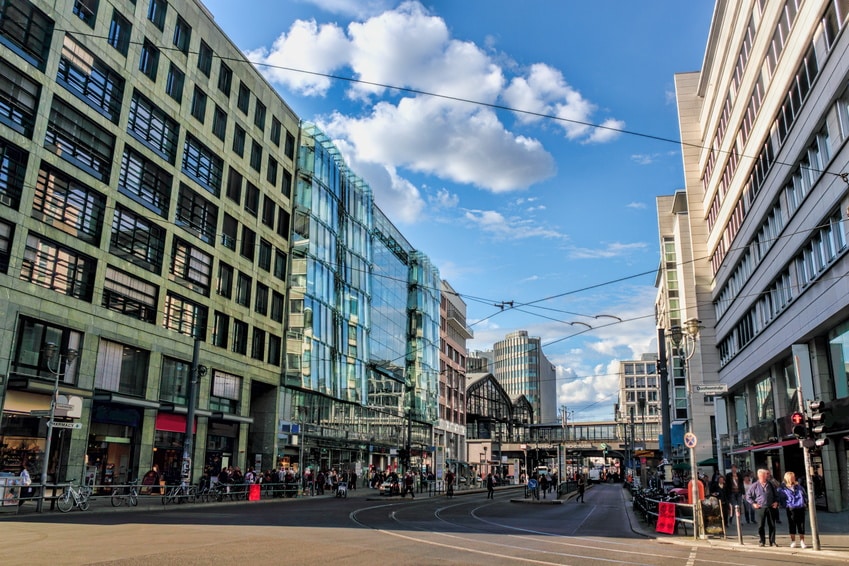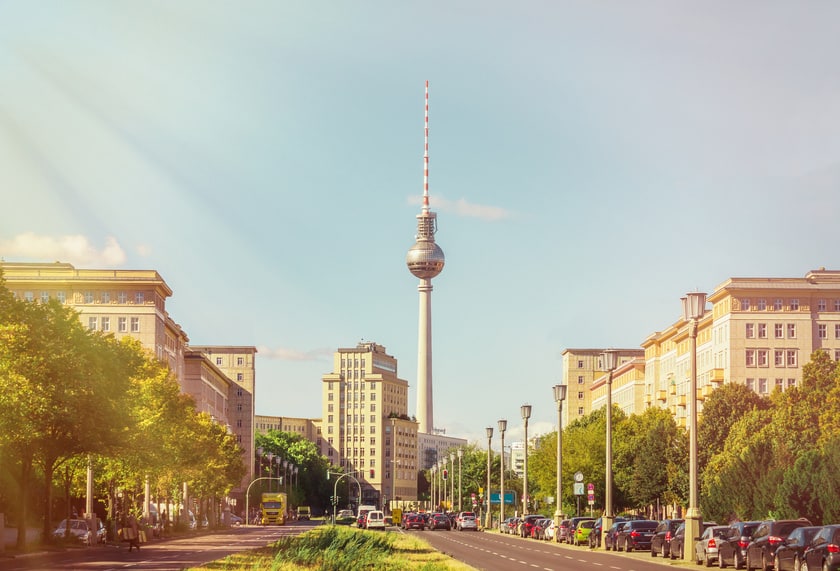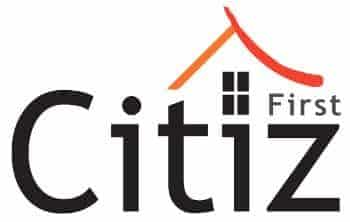Discover Berlin city areas and districts!
Looking to buy a property in Berlin?
We find for you the right property and manage the process from A to Z
Looking to sell a property in Berlin?
We offer you a free valuation & full sale process management
The city of Berlin is one the most multicultural and international capitals in Europe, with almost half non city-native residents. In addition, with the rising city attractiveness and quality of life, Berlin became the most international German city with ca. 25% of foreign nationals & expatriates that have chosen the city to be their new home.
The attractiveness of the city was highlighted in Monocle magazine survey about quality of life survey 2017, where the German city was ranked among top 3 best cities in the world in in terms of quality of life.
Beyond numbers, the city is worldwide reputable for its dynamic and outstanding art and cultural life with 175 museums,140 theaters, 300 cinemas and a world-class event and venues planning as well as hundreds of art exhibitions. Find out about events planning and art calendar in the German city: www.berlin.de/en/events. In addition to being the German museum city, Berlin is also the European capital of classical music with a rich program of shows, classical concerts and operas throughout the year.
For gastronomy amateurs, the German capital offers an unlimited experiencing field with more than 4500 restaurants with international gastronomic specialties and local ones like the popular Berliner Currywurst. Of course, vegetarians would be best served as the German city developed a shining reputation as an international vegan Mecca with ore Vegan restaurants than any other city in the world. To go for a drink, you have to find your favorite place between 1100 bistro and bars and if you are interested in nightlife you’ll find in Berlin most reputable night clubs in the world.
In addition to being a popular travel destination, the city also offers many professional opportunities with a growing economy with the expansion of German companies such as Deutsche Bank, Bayer and Siemens, the relocation of many federal administrations and most importantly with a booming start-up hub whose Zalando company is the most representative with more than 10,000 jobs created in the city. The German capital has a modern infrastructure and with numerous lines of S-Bahn (train), U-Bahn (metro) and Strasse-Bahn (tram). The public transportation is well organized by Deutsche-Bahn, the German national transport company that employs ca. 20.000 people in the city.
Whether you are interested in making Berlin your new home or just planning a stay in the German capital, we hope that those brief guides on Berlin districts and neighborhoods will be of a good help!
The German capital city is divided into 12 main areas called Bezirk in German. The most central Berlin neighborhoods are located within the Ring-Bahn (inside the city ring train line called S-Bahn).
What is your preferred neighborhood in Berlin?
When moving to Berlin, you have to decide whether you want to stay near nature, in a posh area or whether you want to be at the party and alternative areas?
Think of what is important to you. Which atmosphere and amenities would you like in your Berliner neighborhood?
Prenzlauer Berg: most sought-after neighbourhood in East Berlin

Prenzlauer Berg is located in the city north-east and is considered as one of best residential areas of east Berlin. Following a process of gentrification and building renovation, it has become the most fashionable, bohemian and attractive area for young families in the city.
Prenzlauer Berg is especially known for its unique village-like atmosphere, known as “Kiez” in German. Today, the sidewalks are full of boutiques, art galleries, green areas (Mauerpark), restaurants, cafés and trendy bars.
The area is known for its large green squares bordered by cafés, restaurants and bars that became the symbol of “Kiez” atmosphere like Humannplatz, Helmholzplatz place and Kollwitzplatz, place known for its week-end organic market. They serve also a playground for the children, as collaborative urban garden, a breeding ground, and as general as a meeting place.
Prenzlauer Berg area is knownof green cobblestone streets with decoration shops, art galleries, organic glaziers and sunny terraces. The streets of Pappelallee, Stargarder str. and Kastanienallee are a cheerful mix of thrift shops, design boutiques, vegan restaurants and independent cinemas.
The Mauerpark is a park located just next to the Wall that has become an institution in the city and a meeting and leaisure place for Berliners. Every Sunday, a popular flea market takes place, as well as a famous open-air karaoke during the summer season. A true myth, it allows visitors to sing to hundreds of people in the park’s arena and share with the crowd an extraordinary joyful and positive energy.
Living in Prenzlauer Berg is also interesting for art, culture and history lovers, especially with the Wall memorial and the Kulturbrauerei, a former 19th century brewery, transformed into a large cultural complex that has become a must-see in the area and brings together several buildings dating from the 19th century.
Mitte, the most central district of the city

Mitte is the historical centre of the city, it has a history background dating back to the 12th century that one can observe at the Nikolaiviertel area.
The area of Berlin-Mitte attracts millions of tourists every year with Germany’s main attractions like Unter den Linden and the Brandenburg gate, Hackescher Markt, the Bundestag, the TV-tower at Alexanderplatzand. On the 17th century Gendarmenmarkt Square, which hosts several events such as open-air operas and the Christmas market, you can visit the Dome Church, the German Dome and the Konzerthaus Concert Hall.
Mitte is known for its world-class museums like the Naturkunden museum, the Pergamon museum, the Old museum, Bode museum and the new Museum located on the Museum island that hosts historical marvels like the bust of Egyptian queen Nefertiti and the entrance of the antic city of Babylon.
The present of Mitte is highly linked to the cold war and the Berlin wall history that one could feel by visiting Checkpoint Charlie, Unter den Linden or the DDR museum or or historic hotels like the Westin Grand Hotel and the Adlon hotel, a must-see place to visit located in Pariser place, just next to Brandenburg gate. Mitte is definetly the best area to stay in Berlin, if you are visiting the German capital for the first time.
In Mitte, one could find a wide selection of restaurants with international gastronomic specialties, especially for Italian food, grill houses, as well as a high number of food-concept and vegans. Concerning entertainment and leisure, you’ll find in Mitte plenty of bars and clubs of all styles and concepts (of which the famous Berliner Kneipe) as well as countless art exhibitions especially around Auguststrasse.
Pankow, the upcoming district
Pankow, located to the north of the city knows a strong development since 2017 because it is located on the border of Prenzlauer Berg (one U-Bahn station). If you are looking for a new home in the city, This district offers a good compromise with several new property developments and prices that are much more affordable either for renting or buying a new home in Berlin. This district is located just 5 stops from Alexanderplatz and was very popular with the leaders of the East German Communist Party before the fall of the Wall, especially for its many green spaces and prestigious residential areas with villas dating back to the early 20th century. The centre of the district is located around the Rathaus Town Hall and the Bürgerpark, a 12ha park dating from the 19th century. With the renovation of many period buildings, the Florakiez has become the best area in Pankow, a lively area known for its cobbled streets and grand squares surrounded by many cafes, bars and restaurants.
Neukölln – the trendiest area of Berlin
Neukölln is currently the most multicultural and rising area of the “already” most international German city. Thanks to its unique atmosphere, Neukölln is becoming very popular for artists, designers, hipsters and start-uppers.
In the middle of a deep transformation process, Neukölln is a lively area that almost never sleeps with a multitude of bars and flourishing nightlife.
It is attracting new young cosmopolitan population (i.e. from Nordic European countries) that appreciate the alternative atmosphere, the relatively low housing cost and the bohemian life style around Hasenheide Park and Karl-Marx straße. The 18th century square Richardplatz, known for its Christmas market, is an authentic place with medieval airs and ideal for a visit of the district during the winter.
The attractiveness of property prices in Berlin Neukölln has also turned the district into a new destination for small businesses. Many start-ups have taken advantage of this growing popularity of Neukölln among young Berliners and the renovation of several buildings to establish offices in the district. If you are looking to stay a short period in Neukölln, you could choose a boutique hotel or you can stay at Estrel hotel. ranked as the largest hotel in Germany with 1125 rooms. If your stay for a longer period, there are plently of private rooms for rent as shared flats are very popular in the neighborhood.
Kreuzberg, the alternative neighborhood
Kreuzberg is a unique bohemian neighborhood in Berlin and Germany. Formerly a main turkish community district, it became last years the symbol of the city new atmosphere: a mix of multiculturalism, bohemian life, fashion and freedom.
With dozens of clubs and alternative bars, it’s the favorite venue of artists, musicians and clubbers. The nest of electronic music, inspiration for musicians such as David Bowie, the amazing street art, the multiculturalism and openness of the people and the famous club scene made of Kreuzberg the trendiest spot in the city. With this positive atmosphere, in Kreuzberg was born huge summer events that attract millions of participants every year like the Festival of Cultures.
If you enjoy this alternative and vibrant atmosphere, Kreuzberg is for sure your best area to stay in Berlin, especially in the Wrangelkiez and the Bergmankiez neighborhoods. There are also several other points of interest in Kreuzberg like the authentic covered market, the Marheineke Markthalle and the Oberbaumbrücke. The Viktoria park, perched on a hill, offers a panoramic view of the city and the Spree banks walking zone known as Üfer and place for artists and musicans. Kreuzberg host countless art exhibitions and some interesting museums like the German Technical museum and the jewish museum.
Several digital companies, such as Deliveroo, were seduced by the dynamism of Kreuzberg and moved their headquarters to the area. The renovation of many period buildings, attracted last years investors from around the world and improved the standing and reputation of this unique district.
Friedrichshain, the symbol of East-Berlin DDR era

Friedrichshain is borough located in Est-Berlin that was once and once separated from Kreuzberg by the Wall. It has a great location just few minutes by metro from the center. The area is known for the Karl-Marx-Allee, the main street of Friedrichshain with an impressive and unique set of Stalinian style buildings, today classified as historic monuments.
This is probably the area with most of contracts in the city with a “Kiez” residential zone around Boxhagener straße with cafés and restaurants, a nightlife zone around Simon-Dach straße and new development zone (offices and luxury new homes) next to Spree banks.
The most known attraction in Friedrichshain is the east-side gallery, an open-air street art museum, symbol of the Wall fall. The huge 128 acres park Volkspark-Friedrichshain offers a playground for children, a space of picnic and meeting for inhabitants.
Friedrichshain is also dynamic area and highly appreciated by the youth with its countless bars, restaurants and clubs.
Charlottenburg and Wilmersdorf, the West-Berlin flavour borough
Charlottenburg and Wilmersdorf are the most known and symbolic West Berlin districts. Where Wilmersdorf is mostly a local residential highly-rated area, Charlottenburg is more international and dynamic.
The main point of interest is definitely the Kurfürstendamm (Ku’Damm) area with its luxury and brand shops, shopping centers like the famous department store Kaufhaus des Westens.
This neighborhood is very lively and has a number of museums and opera houses, like StaatOper and Deutsche Oper as well as the Memory Church.
After a tour on Ku’Damm, one can take a side street in direction of the lovely Savigny platz and feel this elegant “West atmosphere”. In Charlottenburg-Wilmersodrf, you will appreciate the sophisticated Art Nouveau architecture (Jugendstil) of the period buildings as well as the numerous terraces of cafes and upscale restaurants. The best known hotels in Charlottenburg are the Ellington hotel and the Savoy hotel dating from 1929, in addition to the new Waldorf Astoria hotel. The Royal Charlottenburg Palace is also a main attraction for visitors, especially the castle wonderful park and the canal, highly appreciated by the district inhabitants.
Schöneberg, living between East and West
Schöneberg is a centrally located neighborhood between East and West Berlin that benefits from excellent public transportation. The borough is known for its art galleries in Potsdamerstraße (i.e. Kunstpalais) and its central old town center where one of the largest weekly open-air markets in the city. To go out, Nollendorfplatz and Winterfeldplatz and Akazienstraße are the main areas with plenty of restaurants, bars and cafes. Thanks to its relaxing and live atmosphere Schöneberg has become the most popular gay area in Berlin. In addition to Berlin’s most interesting parks that are Rüdolf Wilde Park and Gleisdereick, Schöneberg hosts the “diplomatic district” with several embassies and consulates.
Steglitz-Zehlendorf, a great neighborhood for greenery lovers
Steglitz-Zehlendorf is a western district of Berlin that become very dynamic last years with the creation of the new second high-street commercial area of the German capital around the long centrally located street of Schloßstrasse with its numerous boutiques, cafés and shopping centers.
Living in Steglitz is ideal for greenery and boating amateurs as great natural parks and lakes are reachable within minutes. Most known lakes are Nikolasee, Schlachtensee and Wannsee that attract thousands of Berliners during the summer period.
The city has Medieval Prussian roots that one can clearly notice on the architecture of buildings. Main attractions are the Schloßpark theatre and the Glienicke bridge known as the bridge of spies.
If you choose Steglitz to be your new home area, the day to day life would not only be functional but also relaxing with the nice green stone-paved streets bordered by numerous cafés and restaurants terraces.
Our Berlin property agents are happy to inform you about Berlin neighborhoods’ specificity, area development trends as well as property prices in the district. Whether you intend to rent, buy your own place or make a real estate investment in Berlin, please, do not hesitate to get in touch with our team! If you are already living in Berlin and have already an area preference, we would be happy to help finding the right flat and assist you with the mortgage process in Germany!
